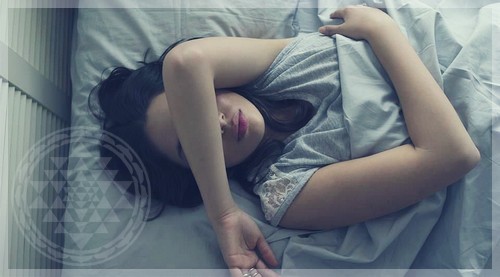Vata Pitta Meaning According to Ayurveda
According to Ayurveda our bodily constitution is made of three doshas: Vata, Pitta and Kapha, which determine our bodily and mental state, our emotions and our vulnerabilities toward certain types of diseases when these doshas are out of balance.
People often have one or two doshas dominant in their body. In our case, Vata and Pitta dosha are quite strong which means their influence is greater than the one of Kapha.

To identify what doshas are dominant in one’s particular case, one has to undergo an ayurvedic dosha test or quiz.
The most common situation when one has two strong doshas, like in our case, it is Vata and Pitta, and Kapha’s influence on the person is insignificant compared to these two.
Vata Pitta or Pitta Vata?
While both combinations have many similarities, the dosha which is mentioned first is usually more prominent among the two. So, Vata-Pitta means that Vata is more dominant than Pitta and vice versa in the second case.
Vata Pitta Dosha Personality
OK, now since we have Vata-Pitta mixed dosha, what are the qualities or characteristics this mixed body type has?
Our skeletal frame is slight and the limbs are probably quite long, our hips and joints are rather narrow; the joints look prominent.
Vata Pitta body has lean muscles; the weight is either steady or there is a tendency to be underweight.
Long face or/ and heart shaped, angular face features, eye are small or of a medium size.
Skin is usually thin, tends to be dry (or sometimes oily); the same for hair – it is thin and fine; often straight, but can be curly as well.
Vata-Pitta prefers warm climate, sunny weather, because due to the poor blood circulation, the extremities often become cold when the environment is also cold.
Mental and Emotional Characteristics

Vata-Pitta personality is intense, ambitious, and intelligent, has lots of new ideas, creative and loves travel. These people love to learn, can have big plans, and are very insightful.
This may lead to over-commitments and the following exhaustion and stress, so it’s important for this dosha combination to know the limits, and to be able to find time for relaxation and rest.
With all the intensity you might have, you need to find time to enjoy what you get or achieve.
Unique Qualities of Each Dosha and Symptoms of Vata Pitta Imbalance
Both Pitta and Vata are light, which meant your body is rather slim, quick-moving, your mind is bright and alert; you are creative and may have spiritual tendencies.
When the lightness quality is out of balance (a person doesn’t feel themselves well grounded), it leads to insomnia, emotional security, headaches, baldness, inadequate nourishment and low blood sugar.
Pitta is spreading, and Vata is mobile, which can be manifested in a form of charm of charisma, influence on other people, recognition, fame, communication, and action.
When the spreading quality is aggravated, it may lead to toxic emotional environment, which surrounds the person.
When there is too much mobility, it produces restlessness in the mind or body, deprives person from internal peace, causes instability in life, inhibits the ability to concentrate, and triggers anxiety, fidgeting or tremors.
Cold and Hot
This is where these doshas are quite opposite. Hot quality makes your digestion strong and keeps your warm.
When in excess, it can lead to acne breakouts, skin rashes, inflammation, excess acidity, burning sensations, and fiery feelings such as anger and rage.
Coldness of Vata dosha makes you more susceptible to cold weather and environment, and your limbs are often cold as well.
When this quality is imbalanced, it results in weak digestive fire, brings the feeling of loneliness and isolation, and causes constriction in the body.
Oily and Dry
Another set of opposite characteristics. Pitta dosha is oily in nature and makes your skin soft and lubricated, your joints – smooth in movements; you can relax easier, and more willing to give and accept love.
But when this oily quality is out of balance (which means there is too much of it), it leads to excessive oil production on skin and hair (making your skin acne prone); you have more mucus in your body, and may act in a manipulative way.
Vata dosha is dry and rough, so in one sense this combination helps your organs and tissues absorb nutrients and eliminate wastes properly. But on the other hand, if these qualities are in excess in your body, it results in skin dryness, waste elimination becomes more difficult (constipation), joints move less smoothly, hair and nails become brittle; a person becomes more careless, and a characteristic rigidity is observed in the mind or body.
Pitta is sharp and liquid, which manifests in quick and penetrating mind, strong appetite, good digestive power, and sharp vision. Liquidity brings healthy digestive juices, proper salivation, normal sweating, and the normal movement of fluids throughout joints, blood and digestive tract.
Excess of sharpness leads to sharp words and hunger, short temper and harsh judgments of oneself and others.
Too much of liquidity dilutes digestive fire, triggers bleeding disorders and excessive sweating.
Vata is subtle, and this quality helps the substances go deep into the cells of the body. It also helps the emotions or ideas go deep into the consciousness and let a person to have a more meaningful life experience.
The aggravation of this subtlety leads to the feeling of aloofness, of being disconnected from reality.
Vata-Pitta’s Sleep, Energy and Stamina

You probably sleep lightly (usually around 7 hours or maybe even less), and may experience insomnia once in a while. The problem is that your body may require more sleep than you think it does, or just more rest, which you may deprive it of regularly.
Usually you wake up fresh and alert, even if your sleep wasn’t that good (but in this case your energy reserves will deplete much faster).
To improve Vata Pitta sleep, one should go to bed earlier to let the body and the nervous system rest nicely.
Pitta makes you a competitive person, while Vata gives your body lightness and mobility. It means you like quick movements, but your stamina may not be so long-lasting, which means you tend to overexert yourself.
Another point is that you often have difficulty in estimating your stamina and strength (as well as time), so you may find yourself not being able to say ‘no’ to things that are beyond your time and capabilities.
So, you need to learn how to properly estimate your own resources (be it time or stamina) and remember to have a rest to let yourself restore your energy.
More on Vata Pitta Imbalance Symptoms
The symptoms of Vata Pitta dosha imbalance will comprise the signs of each dosha, where one may be more prominent, so it may require more attention.
Initially we feel in our mind that something is wrong with us – it all starts from there, with the emotional side.
So, emotionally, Vata would feel as being overwhelmed, loosing focus, lacking energy, trying to escape.
Emotions of Pitta would be: I have so many things to do, I need to find the right solution to my problems, and I have to stop trying to escape, but do something.
These two “points of views” will be constantly switching between themselves, leading to hasty attempts to find the solution to the problems.
How to Balance Vata Pitta dosha?

The signs of such imbalance will be the combination of the imbalance symptoms of the particular dosha, so in the first place you need to know what to expect from Vata or Pitta when they are out of balance.
The second step is to identify at least three ways, how your dosha combination manifests in your daily life. For this you need to pay a closer attention to your food, routine, emotions, work, relationships, etc. For example, what type of food do you eat, or how hectic or planned your life is, or maybe you feel unsettled (Vata sign) because of some unresolved conflict (Pitta sign).
The third step of the treatment is to find ways to pacify the aggravated dosha(s). The first thing to look into is your food. Taking meals prepared from the suitable foods is the easiest way to bring your doshas to a balanced state. For more details, read about Vata Pitta diet.
Peaceful environment is another important thing, because Vata is moving, and Pitta is expanding, so bringing calmness to your life will balance both of these qualities.
Warm water is also very effective for both doshas, so take a warm bath or steam sauna, but don’t overdo it to keep Pitta in a balanced state.
Other recommendations include using appropriate oils and completing what you planned or started, because the feeling of having completed the task is very pacifying for Pitta, and it relieves Vata from the burden of an unfinished work as well. But you need to do it in steps – to complete one thing at a time, because trying to do all at once will aggravate Vata.
So, the whole idea is to reduce the aggravated qualities by increasing the opposite ones of each dosha.